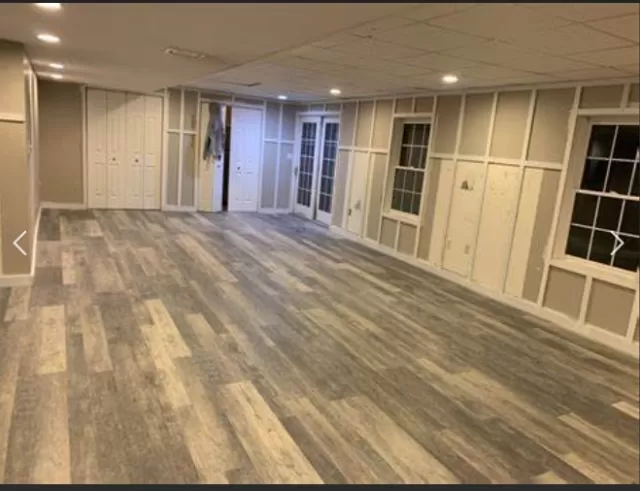Designers’ Tips on Avoiding Décor Mistakes. Decorating a small space requires a nuanced approach to design, taking into consideration various factors to achieve a cozy and chic atmosphere without overwhelming the limited square footage. From furniture size and placement to lighting, mirrors, vertical storage, and paint choices, the key is finding the right balance. To guide you in this endeavor, we’ve compiled tips from eight experts to help make your smallest spaces both functional and stylish.
Furniture Size and Placement:
Expert Tip: Choose furniture that suits the scale of the room, and be strategic in its placement. Opt for pieces with exposed legs to create a sense of openness and use multifunctional furniture when possible.
Key Insight: Properly scaled furniture and thoughtful arrangement contribute to an open and inviting feel in small spaces.
Lighting:
Expert Tip: Incorporate a mix of sconces, ceiling lights, and task lighting to create layers of illumination. Consider fixtures that don’t take up valuable floor or surface space.
Key Insight: Effective lighting design enhances the perception of space and adds a touch of sophistication to small interiors.
Mirrors:
Expert Tip: Use mirrors strategically to reflect light and create the illusion of more space. Consider mirrored furniture or decor to add a sense of depth.
Key Insight: Mirrors are a powerful tool in visually expanding small spaces and enhancing their overall aesthetic.
Vertical Storage:
Expert Tip: Maximize vertical space with tall bookshelves, wall-mounted cabinets, or floating shelves. This not only adds storage but draws the eye upward.
Key Insight: Utilizing vertical storage solutions is essential for optimizing functionality and preventing visual clutter in compact areas.
Paint Colors and Textured Wallpaper:
Expert Tip: Opt for light and neutral paint colors to create an airy feel. Consider textured wallpaper to add depth without overwhelming the space.
Key Insight: Thoughtful color choices and textured elements contribute to the overall ambiance, making small spaces feel more expansive.
Incorporating these Expert Tips into your small-space design approach can lead to a harmonious blend of functionality and style. By paying attention to details and leveraging design elements strategically, you can transform even the tiniest footprint into a welcoming and aesthetically pleasing environment.
Improving the Well-Being of Your Aging Canine Companion: The Benefits of Night Lights

In the caring journey of looking after a senior dog, addressing age-related challenges becomes paramount.
Dr. Fox recommends a practical solution to enhance safety and comfort for your elderly pet: the incorporation of night lights into their living space.
As dogs age, issues such as nuclear sclerosis and cataracts can lead to vision and hearing impairments, especially in low-light conditions. Here’s a breakdown of how night lights can significantly contribute to your senior dog’s well-being:.
Prevent Injuries: Navigating in the dark can be particularly challenging for senior dogs, increasing the likelihood of accidental bumps or falls.
Night lights provide a soft and consistent illumination, acting as a safeguard against potential accidents and ensuring your pet moves about their environment safely.
Mitigate Vision Impairment: For dogs with vision issues, nighttime navigation can be especially daunting.
Night lights serve as helpful beacons, offering a reference point that aids your elderly pet in recognizing their surroundings and moving with confidence during the darker hours.
Create a Sense of Security: Illuminating the spaces where your senior dog sleeps or frequents establishes a comforting environment.
Night lights contribute to reducing anxiety by making the area familiar and easily navigable, providing a sense of security for your furry friend.
Facilitate Independence: Improved visibility empowers your senior dog to maintain a sense of independence.
By encouraging movement and exploration with confidence, night lights play a crucial role in supporting your aging pet’s autonomy.
Strategically placing night lights in key areas frequented by your senior dog is a simple yet effective way to enhance their safety, comfort, and overall well-being.
By addressing the challenges associated with aging through thoughtful measures, you create an environment that allows your beloved pet to age gracefully and contentedly.
Neglecting the Potential of Vertical Storage: Enhancing Small Spaces

In the pursuit of optimizing limited spaces, whether it be a compact craft room, a petite office resembling a jewel box, or a snug nursery, the strategic utilization of vertical storage proves instrumental in not only conferring an illusion of heightened space but also in maintaining an organized environment.
According to Zacks, an expert in space optimization, “When faced with the challenge of a small area, one of the initial aspects I examine is the presence of any untapped vertical space. This aspect is frequently overlooked, yet it serves as an excellent avenue for infusing visual interest and establishing efficient storage solutions.
There’s both functionality and aesthetic appeal in incorporating vertical storage—it not only serves a practical purpose but also captures attention by drawing the gaze upward. “.
Beyond Light Hues: Embracing the Bold in Small Room Design

Conventional design wisdom once advocated for the use of light paint colors, particularly whites and pale neutrals, in smaller spaces.
However, contemporary experts caution against this approach, asserting that such choices can inadvertently emphasize the compactness of a room. Santiago advises steering away from white walls in small spaces, asserting that they tend to magnify the room’s size.
Instead, he advocates for the use of solid textured wallpaper or the application of vibrant paint colors. Embracing darker hues is encouraged, with the suggestion to embrace the small scale of the room and enhance its coziness through the strategic use of richer tones.
Alexis Pew of Kaminski + Pew challenges the traditional notion that small spaces necessitate light colors.
She advocates for exploring darker hues, emphasizing that they can introduce depth, ambiance, and dimension to the space. Pew notes that darker colors not only offer aesthetic benefits but are also a cost-effective means of creating a visually impactful environment.
To maximize the impact of chosen colors, Williams proposes extending the paint treatment beyond just the walls.
Including the ceiling in the selected color palette can visually expand the room and infuse a sense of brightness. This approach challenges the notion that smaller spaces should stick to conventional color norms and encourages a more adventurous use of paint.
While accent walls are often recommended to introduce bold colors gradually, Victoria McKenney of Enviable Designs suggests a different strategy for small rooms.
Contrary to the one-wall approach, she advises painting the entire room in a single color to create the illusion of expanded walls. According to McKenney, this technique contributes to broadening the visual perimeter of the room, even when employing darker shades.
In essence, the key lies in embracing color boldly and uniformly to transform the perceived dimensions of a small space.
Navigating Patterns in Small Spaces: Striking the Right Balance
.
Harnessing the power of patterns through the use of wallpaper can indeed transform a petite space into a visually impactful environment, according to insights from Zacks.
The infusion of color and pattern, she suggests, can imbue small spaces with depth and dimension, creating a sensation of being transported to a distinct moment or place. However, the delicate balance lies in the careful curation of these design elements.
While patterns hold the potential to elevate a small space, experts caution against overindulgence in hues, prints, and textures.
The risk of visual chaos looms when too many elements are introduced, potentially undermining the cohesiveness of the room. McKenney emphasizes the critical importance of exercising restraint in design, especially when working with limited space.
In her view, effective editing is essential to prevent overwhelming the senses in a small room.
For those aiming to enhance a compact space, McKenney suggests focusing on texture as a means of introducing visual interest.
This can be achieved through thoughtful choices in flooring, textiles, and lighting. The key, she notes, lies in maintaining a unified color palette, ensuring that the textures harmonize rather than compete.
This approach allows for the creation of a cohesive and inviting atmosphere in a small room, where the judicious use of patterns enhances without overpowering, resulting in a harmonious and visually pleasing design.
*The information is for reference only.